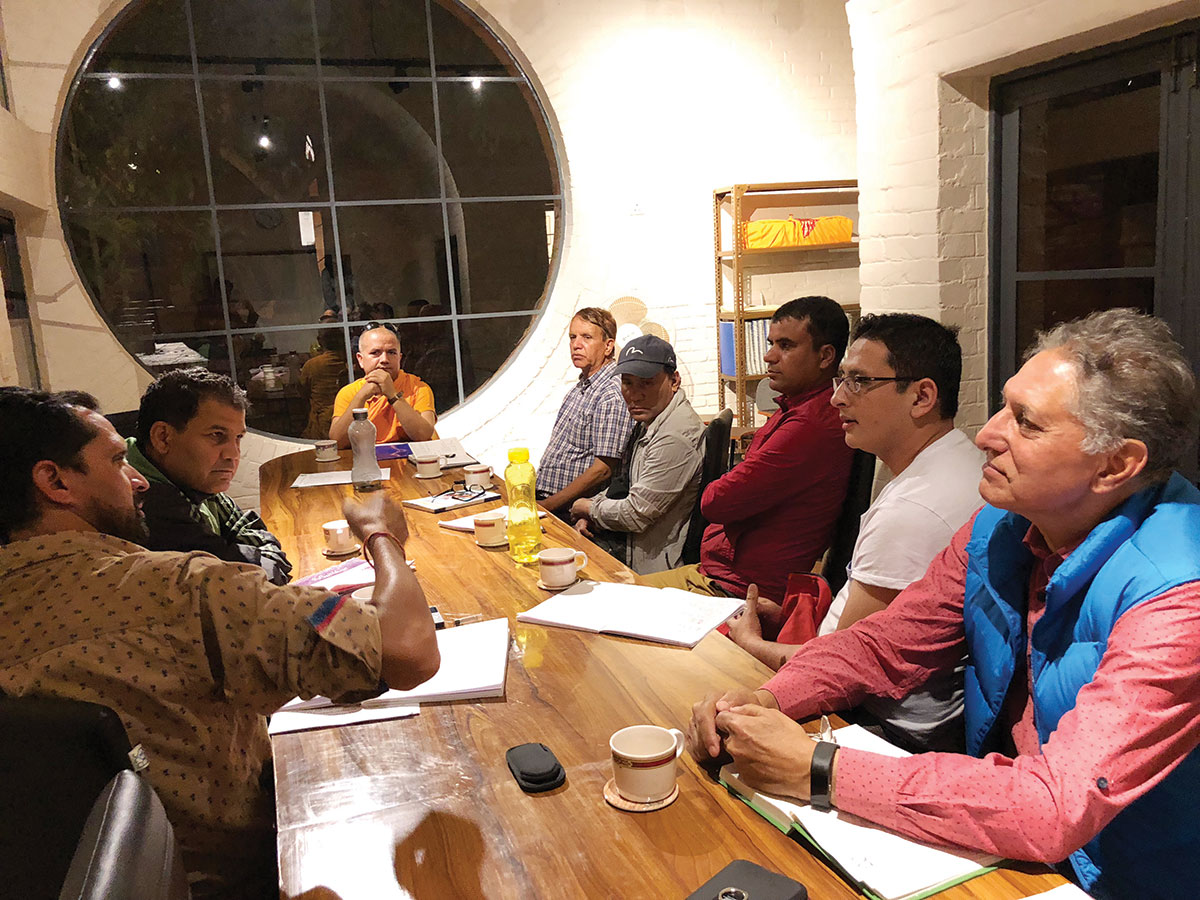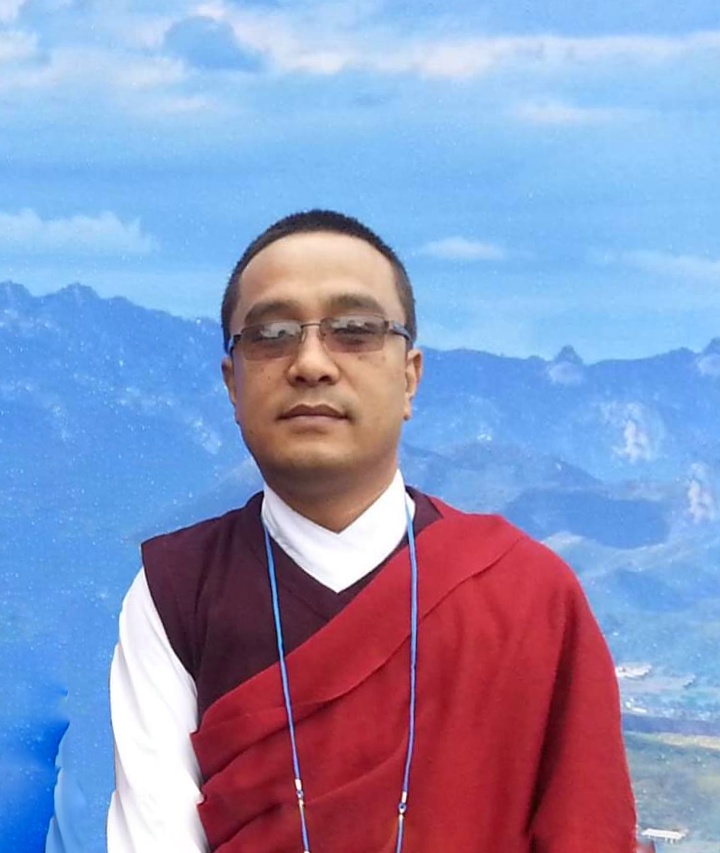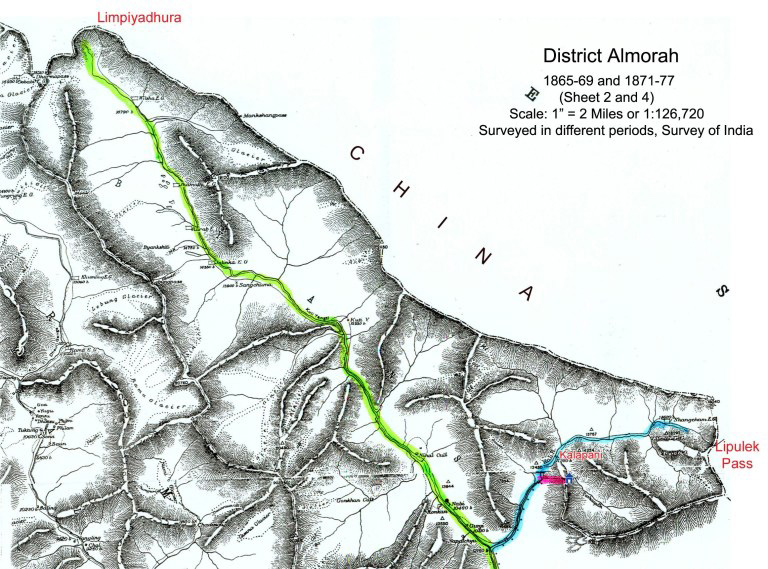Where Nepali book lovers flock
Interested in books? You may want to be a part of this Facebook group then.
bOOkahOlics, a Nepali Facebook group established in 2011, has become increasingly popular among the lovers of books and literature. With 15,000 members, it is a platform to explore reading and writing. Entry to bOOkahOlics is open for all. With apparently no vested interest and profit-making motive, the group conducts various events to enhance the reading culture, and to connect readers with writers.
Saguna Shah, the founder of bOOkahOlics, proudly recalls the days of the group’s infancy. She, along with some of her friends, including contemporary writer Anupam Pokharel—author of ‘Rumi’ and ‘Sadguru’, among others—started the group to encourage reading. Gradually, readers and writers started connecting and the group grew.
The unique spelling of the group’s name immediately catches your attention. “Yes, the three O’s in the name is meant to be catchy. It has now become our identity,” says Shah. The group’s slogan? ‘Reading is not optional.’ Indeed.
With time many literary figures joined the platform and discussions became more regular and vibrant. In 2014, the group, in coordination with Nepal’s noted research institute Martin Chautari, conducted its first Chakati Bahas (cushion dialogue), which continues till date.
The popular Chakati Bahas is held at Martin Chautari, Thapathali, on the first Friday of every English month. Members gather around to discuss, evaluate, and comment on a literary work, particularly a book. The meeting focuses on thematic discussion and comparative evaluation.
Apart from nurturing the reading culture, bOOkahOlics team occasionally comes forward to help the community. After the 2015 earthquakes, they provided books, stationery, and sports items to needy school children.
During the lockdown, the group has been organizing online poem competitions and Shrasta Sanga Sakshyatkar (‘face-to-face with the author’), virtually. Ganesh Karki, an admin who also coordinates events, says over 400 poets take part in the poem competition on an average.
In Shrasta Sanga Sakshyatkar, every day a literary figure is invited for a live Facebook session. Karki says the event has been helpful in connecting readers with writers. Among those invited are Madan Puraskar winners Krishna Dharabasi and Yuvaraj Nayaghare.
“bOOkahOlics can be exceptionally helpful in helping you find suitable Nepali books, and even international ones,” says Dharabasi, a 2005 Madan Puraskar winner.
There are dozens of posts each day. “The kind of response we have been getting, we can say that people do like to read,” says Karki.
Members and followers talk about the inspiration they get from the group. “bOOkahOlics has made me fond of reading during the lockdown,” says Bishab Pokharel, 22, who is studying computer engineering in India. For Kathmandu-based IT student Dipesh Dhakal, 20, the platform is like a well-stocked library.
Nepal could struggle to adjust returning migrants
As many as 600,000 Nepali migrant workers stranded in the Gulf countries and Malaysia due to the Covid-19 pandemic want to return home. This is in addition to perhaps even more of them who want to reenter their country from neighboring India. Many of them have already lost their jobs while others too await the termination of their contracts.
According to a preliminary government report, around 500,000 Nepali migrant workers—mainly from the five Gulf countries of Bahrain, the UAE, Saudi Arabia, Qatar, and Oman—want to return immediately. Even among them, around 100,000 need urgent rescue. But the federal government is yet to come up with a solid repatriation plan.
“The way I see it, evacuating migrant workers stranded abroad is going to be a bigger challenge than fighting Covid-19 at home,” says Arjun Kanta Mainali, a former joint secretary at the Ministry of Foreign Affairs who closely followed the Gulf region while at the ministry. “The government’s first duty is to find out the exact number of people who want to return, or have no other option after losing their jobs. If necessary, we can send a fact-finding mission to those countries,” says Mainali. Without finding out the actual number, he adds, the government will struggle to come up with a credible plan on evacuation, quarantine, and social reintegration of those workers.
Nepal issues work permits for 130 countries. Almost two-thirds of those with work permits end up in Malaysia or in the Gulf countries. Foreign Minister Pradeep Kumar Gyawali, who is in regular contact with Nepali missions abroad, accepts that Nepali migrant workers abroad are facing severe hardships due to the corona pandemic—and the situation could get worse.
Speaking at a parliamentary committee meeting on May 6, Gyawali said preliminary assessment showed “10-30 percent Nepali migrant workers are likely to lose their jobs.” In the past decade, Nepal issued over 3.5 million labor permits. (Nepali workers don’t need permits to work in India.)
Herculean task
The main problems Nepali workers are facing relate to expiry of visa, termination of job contracts, and legal problems arising from visa expiry. Nepal is looking to buy time. Prime Minister KP Oli and Foreign Minister Gyawali are trying to persuade their counterparts in Gulf countries to delay the return of migrant workers. “We cannot evacuate all those who want to return at once, so we have to give priority to those in crisis,” says former government secretary Purna Chandra Bhattarai who worked in the Labor Ministry for a long time.
The first challenge is to arrange their return flights with the state’s limited financial resources. As all stranded migrant workers cannot pay for their tickets, the government will have to pitch in for them. It will also have to hire foreign airlines to airlift them. It will also be a time-consuming process. As the number of workers in Gulf countries and Malaysia is very high, it could take months to complete evacuation even if the task were to start now. “Coming up with a comprehensive repatriation plan is thus difficult without thorough discussions with all the concerned stakeholders,” says Bhattarai.
The second challenge is arranging quarantine facilities for those who return. Local governments can help arrange quarantine facilities, but they are short on resources. They are asking for cash from the federal government, which in turn is struggling to meet their demand as it too is under considerable financial pressure. As local units have struggled to quarantine and monitor even a handful of people up until now, it is hard to imagine them handling hundreds of returning migrants.
“Let us say that we as a country are thoroughly unprepared,” says Mainali. Even in the case the Nepali workers are not immediately sent back by their host countries, they will surely come when international air travel resumes. “It’s not like we have an option of not taking back our people,” he adds.
Scary numbers
The top nine destinations for Nepali migrant workers, according to the Ministry of Foreign Affairs, are Malaysia (700,000), Saudi Arabi (400,000), Qatar (365,000), the UAE (250,000), Kuwait (70,000), South Korea (40,000), Bahrain (25,000), Oman (20,000), and Israel (3,000).
Although there is no official estimate of the number of Nepali migrant workers in India, a report by the South Asian Watch on Trade, Economics and Environment (SWATEE) says that it could be as high as 2.8 million. Thousands of Nepali migrant workers go to various parts of India as seasonal migrant workers. Thousands more work in the hospitality sector. Many of them could lose their jobs.
Creating jobs for those who return will be another big challenge. According to Nepal Labor Force Survey 2018, there are approximately 20.7 million working-age people in the country. Of them, over half are believed to be working in the informal sector. An estimated 500,000 people enter the Nepali labor market annually. Before the onset of the corona crisis, as per the Finance Ministry’s 2018-19 economic survey, the government was planning on transferring unproductive surplus labor force from “agriculture… to service sectors including industry, trade, tourism, education and health.”
With the decimation of these other sectors due to the corona pandemic, the government has been forced into a U-turn, as it now plans on a massive expansion of the agriculture labor force. The hope is that revitalization of agriculture will soak up Nepal’s surplus labor as well as many of the returning migrants. Yet the agriculture plan is short on specifics.
This lack of seriousness could be costly. It is hard to foresee the socio-economic and political consequences of the state’s failure to adequately integrate the mass of returning migrant workers.
A different kind of Ramadan
Followers of Islam celebrate Ramadan during the ninth month of the Hijri Calendar. It is considered the holiest Islamic month when Muslims fast. They don’t eat or drink from dawn to dusk. The month (starting April 23 and ending May 23 this year) concludes with the grand celebrations of Eid ul-Fitr.
The daylight fast is followed by a feast after sunset, which is called Iftar. Then there is Suhoor, the feast before sunrise. Reading Namaz and offering Zakat (charity) to the poor and needy ones are other main activities associated with Ramadan. People go to mosques for prayers, exchange greetings, and organize large feasts. Ramadan brings Muslim families and communities together in celebration.
But this year, the scenario is different. Like everybody else, the Muslim people are trying to avoid gatherings. They have confined their prayers, feasts, and other celebrations to their houses. The festival this time has become a family affair. Common rituals like taking Suhoor, reading Namaz, breaking fast after sunset, taking Iftar, and doing nightly prayers continue. But in the absence of community and family gatherings, the Ramadan is unusually quiet.
For Armaan Khan, a businessman from Sunsari, this year’s Ramadan is unique. He shares his experience of turning a small room of his house into a tiny mosque for Namaz and other prayers. “Complying with government directives, we are having Iftar party within the family”, he says. “And we now pay Zakat digitally.”
The pandemic and lockdown have resulted in considerable financial hardship for many families. As income shrinks, buying nutritious food during the fasting period has become difficult. Ismam Ansari, an IT expert in Kathmandu, says, “Due to the lockdown and resulting financial problem, there is a scarcity of quality food in families. Fruits are expensive. Many can’t afford them.” His only comfort is being relived of his office duties during Ramadan. “There is no work stress and no rush, which makes it easy to fast.”
Mosques across the country are almost empty, which is the most strange during Ramadan. It’s the same abroad. Most countries have closed down mosques and asked people to pray at home. The government of Nepal too has restricted human movement in mosques. The Kathmandu-based Jame Masjid issued a notice requesting people to not come visit for prayers this year.
For Abjal Khan, a pharmacy student in Kathmandu, the toned-down celebration is fine because the risk of the virus is high.
After praying and fasting, charity is another major component of Ramadan. The lockdown has affected this tradition too. Shamshad Aadil, a social activist from Kapilvastu currently living in Kathmandu, espies a couple of alternatives. He suggests that instead of handing out Zakat, people donate to local governments and help them control the pandemic. The other alternative, he adds, is to offer food to poor families at some safe place.
Hani Ansari, a pharmacist in Nepalgunj, does not like this traditional way of giving being interrupted.
Another Sunsari native Armaan Khan is relying on the digital payment platform e-Sewa this time. “As the world is being digitalized, we can use online platforms to help the poor and needy. Where there is will, there is a way,” he adds.
A Nepali historian’s quest to popularize Himalayan Buddhism
Born near the mountains of eastern Sankhuwasabha district, Ramesh Dhungel did not like the idea of going to the US to study Nepal’s Himalayas. But that was almost three decades ago, and he did not have a better option at home.
Prof. Ramesh Dhungel
He used to work at the Tribhuvan University's Center for Nepal and Asian Studies (CNAS) back in the 1980’s. His contemporaries often talked about going to the West for further studies, but he did not like it. A gold medalist in cultural studies from the Tribhuvan University, he drew inspiration from Nepal’s noted historian and epigraphist Pandit Dhanavajra Vajracharya. But as destiny would have it, he embarked for the US in 1992 for higher studies, first and briefly to George Mason University and then to Columbia University, where he spent five years. Then director of CNAS, Kumar Khadga Bikram Shah, who appreciated Dhungel's scholarship, granted him an academic leave.
An MPhil and PhD from Columbia University and author of a number of acclaimed publications, Professor Ramesh Dhungel needs no introduction. He is one of the few Nepali scholars that academics and journalists from home and abroad seek out on Himalayan cultures, heritage, history, and Buddhist studies. His PhD thesis, which was later published as a book, The Kingdom of Lo (Mustang): A Historical Study, serves as a primer for the study of the hidden kingdom of Mustang.
“At first, I didn't feel good about it. I kept thinking, ‘Why should I go to Britain or the US to study my own heritage?’” recalls Dhungel. “But then, everybody talked about the high academic standards of American and British universities. So I went for an educational experience.”
Studying in Columbia was transformative in many ways. “The academic rigor there was extraordinary. There were unlimited resources for a student with limited time. Libraries opened whole night with access to millions of books and journals. Even rare books about Nepal that are not available in Nepal were there,” he recalls.
“I could have done PhD at Tribhuvan University also. But I would not get the best education. In Columbia, you could learn from the best professors from around the world,” Dhungel says. “They made every effort to ensure that research conformed to utmost objectivity and precision. A postgraduate research from a university like Columbia adds to the stock of existing knowledge, as we often say in academia.”
When in New York, the thought of how Nepal lacked a good academic program in Himalayan cultures and heritages constantly gnawed at him. Even back then he harbored a wish to start a world-class academic center in Nepal for Himalayan studies. Years later, he and a few colleagues were able to establish the Department of Buddhist Studies at Tribhuvan University, Nepal’s biggest and oldest center of higher learning.
But Dhungel wished to run programs with exclusive focus on Himalayan Buddhism, for which the department wasn’t enough. So he started Lumbini College of Buddhist and Himalayan Studies in 2012 with an affiliation from Lumbini Buddhist University. Situated inside the premises of Hyatt Regency in Kathmandu, the program has ties with the Technical University of Berlin.
“As is evident from the name, we focus on Himalayan Buddhism. Our programs are unique in the sense that nowhere in the world will you find such courses on Buddhism focusing on the study of Buddhist heritage and history of the Himalayas. We emphasize Buddhist art and architecture, philosophy, and language studies,” says Dhungel.
Building on the unique blend of Buddhism with cultures and history of the Himalayan region, Professor Dhungel has high hopes from the master's degree program in Buddhism and Himalayan Studies (MBHS), which is his brainchild. Major subjects offered include: Buddhist art and architecture, traditional heritage conservation, discourse analysis and hermeneutics, Buddhism in Nepal Himalaya, Buddhist philosophy, and history. Two major source languages of Buddhism—Tibetan and Sanskrit—are also taught. The program is run fully in English medium.
“Our aim is to draw students from across the world,” Dhungel adds. “We may not beat Columbia or Oxford in terms of size and resources, but for the study of our Himalayan heritage and Buddhist tradition, nobody can beat us.”

Going by Dhungel’s qualifications and commitment, the goal is not difficult. Says Umesh Regmi, a MBHS alumnus and now department head in Buddhist studies at Padma Kanya Campus: “You don't need to talk about the qualifications of Professor Dhungel, a renowned scholar. The program offered there is highly beneficial for anyone in the world who wants to study Himalayan Buddhism.”
Regmi, who has been closely observing the college since its inception, asserts that a combination of Himalayan heritage with core Buddhist studies and source languages makes MBHS a potent program. “The program follows standard international semester and grading system. It was a great learning experience for me too.”
Dhungel aims to make the MBHS the most sought after program in Himalayan Buddhist studies. “We have the mountains, we have rich culture, and we are the land of the Buddha. Wouldn’t it be wonderful if people from the world over come to Nepal to study our Buddhist heritage?”
Why Himalayan Buddhism?

Manik Ratna Shakya
Dean, Lumbini Buddhist University
There are three major Buddhist traditions in Nepal. First, the Buddhism practiced in the Himalayan regions; second, the traditional Buddhism of Kathmandu Valley; and third, the Theravada Buddhism practiced by bhikshus and bhikshunis. These three forms of Buddhism are Nepal’s heritage.
Himalayan Buddhism has its unique features, and deserves careful protection and promotion. The program offered by Lumbini College of Buddhism and Himalayan Studies is important in this regard.
There are about 400 monasteries, big and small, in Nepal’s sparsely populated Himalayan region. They are Nepal’s great heritage. It is important to preserve them in their antiquity and all historical as well as religious attributes.
Currently, only few people know about the Buddhism and Himalayan Studies program. It needs to be publicized so that all those interested know about it and get its benefits, wherever they are in the world.
I request Nepal government to appreciate the Himalayan heritage and support us expand this education as widely as possible.









_20200508134103.jpg )
)









